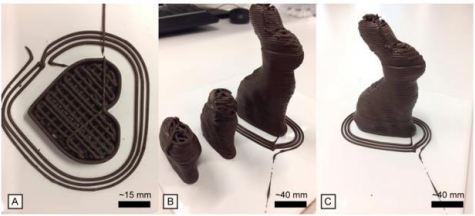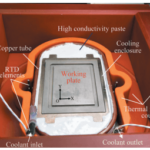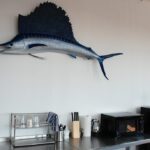

Several research studies have focused on the 3D printing of food, lending it a seriousness beyond the way that many people still see it, which is as a novelty. In a new paper entitled “A Review of 3D Food Printing Technology,” a group of researchers gives an overview of the multiple methods available for 3D printing food, as well as their purposes, advantages and disadvantages. They evaluate each technique based on printability, productivity, properties of material, effect parameters and mechanism of printing.
The first method the researchers look at is extrusion-based 3D printing, which is similar to fused deposition modeling (FDM) except that the starting material can be either solid or paste. Examples of food printed with this method are dough, meat paste and cheese. The researchers point to several other studies that were conducted using this method, including studies that focused on 3D printing sugar cookies, lemon juice gel, fish surimi gel and chocolate. Results gleaned from these studies included:
- Nozzle movement speed and extrusion rate affect the quality of 3D food printing
- The extruder assembly should be as rigid as possible, especially for chocolate 3D printing
- A effective active cooling system is needed for chocolate 3D printing
The advantages of extrusion-based 3D printing, according to the researchers, are the low costs of the entry-level printers, the variety of raw materials available and the ease of customization. The disadvantages include the low level of precision and the long build time.
Inkjet 3D printing is the next method examined. Inkjet printers normally print with low viscosity liquids, so they are generally not used for 3D printing complex food structures and instead are relegated to things such as surface filling or decorations on cookies, cakes or pizzas. Materials include chocolate, liquid dough, sugar icing, meat paste, cheese, jams and gels.
“This process generally operates by using thermal or piezoelectric heads,” the researchers state. “In a thermal inkjet printer, the print head is electrically heated to establish pulses of pressure that push droplets from the nozzle. There are two types of inkjet printing methods: a continuous jet printing and a drop-on-demand printing.”

Advantages of inkjet printing include high resolution, accuracy, and a variety of materials. Disadvantages include the delicacy of the 3D printed features, which may be damaged by post-processing.
Finally, the researchers discuss binder jetting. This involves the use of a binder to selectively bond layers of powder.
“For binder jetting process, properties of powdered material and binder are important to the successful fabrication of parts,” the researchers state. “The binder has to be suitable low viscosity in which surface tension and ink density are suitable properties to prevent spreading from nozzles.”
Advantages of binder jetting include high production speed, and the automatic inclusion of support structures in the layer fabrication. Disadvantages include a rough or grainy appearance and the necessity of post-processing to remove moisture or improve the strength of the printed foods.
Authors of the paper include Paphakorn Pitayachaval, Nattawut Sanklong and Anantapoom Thongrak from the Suranaree University of Technology in Thailand.
Discuss this and other 3D printing topics at 3DPrintBoard.com or share your thoughts below.
If you're looking to get architectural 3D animation in the USA, our service provides an exceptional way to bring your architectural concepts to life through dynamic, immersive visuals. Through our platform, you can easily request high-quality 3D animations that showcase your designs in motion, offering a detailed view of your project from multiple angles and perspectives. Whether it's for a real estate development, a commercial building, or an urban planning project, our expert team ensures that every detail is captured in a visually compelling animation.
Through our website, you can seamlessly get architectural 3D animation tailored to your project’s specific needs. With our help, you can offer potential clients or investors an engaging experience that goes beyond static images. By integrating CGI animations with real-world settings, lighting, and textures, our team creates a lifelike experience that allows your audience to interact with your project as though it were already built. This service is perfect for presenting complex designs in a clear, visually attractive way that stands out in the competitive architectural market.




